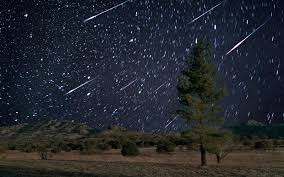Skygazer
Yes, I know. Skygazer’s not technically a word, although I would argue it should be. Stargazer is a word, and it’s defined by dictionary.com (I’ll admit, not exactly the world’s premier lexicon, but it serves a purpose) as: 1. A person who stargazes, as an astronomer or astrologer. (Disregard that they used the word stargazes in the definition of stargazer. Ugh.) Beyond that egregiousness, this simplistic definition seems to be a resounding reason why skygazer as every bit as legitimate a word as stargazer.
As a surprise to no one, I’m sure, I think I am one.
First of all, I find the word stargazer to be far too restrictive in its parameters of what, exactly, is being gazed upon. I look at a lot more when I turn my gaze upward than just stars. Yes, I’m nit-picking. The definition above includes those who study astrology as stargazers. But astrology is primarily occupied with studying planets and other celestial bodies not technically stars.
As a skygazer, I not only look up to view stars and planets, the sun, the moon, etc. I also look up to observe a whole lot of space debris: dust, rocks, ice, chunks of all sorts of things whizzing through space and often, on a regular basis, encountering our atmosphere and creating a spectacle.
Reminders
I was reminded that skygazing has been something I ‘do’ (and have done for as long as I can remember) just today when I received a Facebook notification of a memory. It was from August 10th, 2010, and I’d posted that I was staring up into the heavens in order to glimpse colors dancing across the sky that were associated with solar flares. But that was only the most recent in a fairly frequent parade of such reminders.
Seeing this post of mine from ten years ago made me realize that I do tend to look up a lot. I also noticed that I’ve written a decent number of posts involving meteor showers, comets, eclipses, and other celestial phenomena that involve objects or events in the sky that have nothing to do with stars per se.
So it’s settled. Skygazer is a word, a noun; and I am one.
Perseids
All of which leads me to remind you that the Perseids meteor showers will be taking place over the next two evenings. Specifically, between 11:00 p.m. tomorrow (Tuesday) night and 1:00 a.m. Wednesday the space debris lighting up the sky should be at its peak. It’s possible, if the sky is clear and the conditions are otherwise favorable that we could see between 60 and 75 meteors an hour. This article is slightly more in-depth.
Speaking from experience, it’s best to find a place to skygaze that’s as far away from ambient light as possible. I didn’t realize it, but it can take our eyes a good 45 minutes to fully adjust to the dark. It’s also far more comfortable if you can either sit in a chair that you can recline in and have your head supported, or simply find a place to safely lay out on a blanket. It’s essential to give yourself the time and peaceful patience that will allow you to expand your gaze widely in order to drink in as much sky with your eyes as possible.
A crick in your neck is not conducive to fruitful, contemplative, serious skygazing.
Get Lucky
I’m hoping the weather will hold and tomorrow night I’ll have the opportunity to watch bits of dust skitter across or into the atmosphere leaving a trail of sparkling light. If you happen to know you’ll be asleep by 11:00 p.m., give yourself a chance to get lucky anyway. Take a walk in the early evening and keep your eyes skyward. There’s a chance you may see some very long-tailed meteors as they skip off the edge of our atmosphere (instead of plunging through it). Those apparently occur before the main show of meteors, emanating from the darkest part of the sky, take center stage.
In the midst of all that we’re enduring right now, there’s something wonderful and perhaps hopeful in witnessing a phenomenon that humans have been observing for thousands of years. There are a lot bigger plot lines out there than just ours.
I’m an incorrigible skygazer. Join me.

(T-473)
